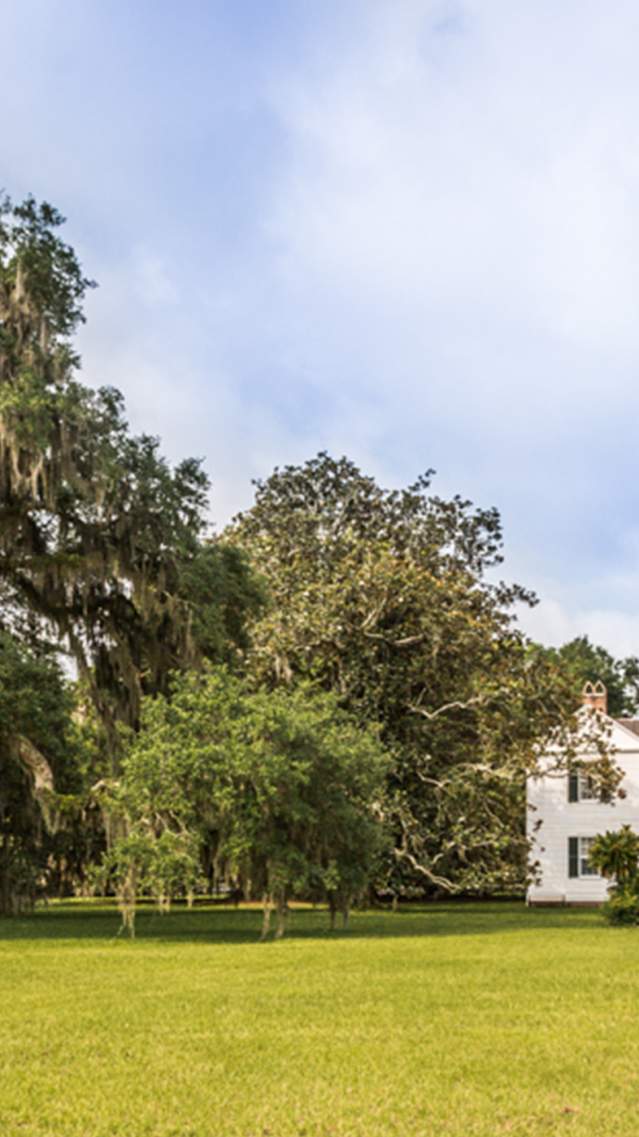Plantation & Slavery History
As wealthy South Carolinians rushed to carve out rice plantations along tidal rivers, those who knew the art of growing rice were brought in from the African countries where rice growing was commonplace. The tediousness of the process, the dangers of its cultivation in swamp-like conditions, and the various untoward circumstances such as hurricanes or invasion by ricebirds, made the rice extremely difficult to produce.
Since slavery was an inexpensive work force, fortunes were made on the Georgia coast by rice production. Owners of these rice plantations were in residence only during tolerable months. Many sought relief from heat and insects with summer trips to the northern watering holes. Thus, the slaves left behind to cultivate the crops experienced some autonomy.
Built in 1807, Hofwyl-Broadfield once boasted over 7,000 acres of rice fields worked by more than 350 slaves–obtained mostly from Africa’s west coast. After the Civil War, African-Americans who had lived at Hofwyl and other rice plantations along the Altamaha River – Hopeton, Elizafield, Grantly, New Hope and others – settled into small communities nearby. They continued to work for pay at the same jobs at which they had labored as slaves. Petersville was one of these communities, its name coming from an old slave, Peter, who first lived there.
Another settlement, Needwood, was so named because of the shortage of “fat lighter wood” needed for cooking fires. Still another such community bore a name, which needs no explanation – Freedman’s Rest. Rice harvesting ceased at Hofwyl in 1915 and the plantation became a State Historic Site in 1974. While little remains of other plantations in this area, Hofwyl-Broadfield stands much as it did nearly 200 years ago, offering a glimpse into Georgia’s 19th-century rice culture. Today, through its dwellings, servant quarters, museum, artifacts, photo exhibits, and video presentation, the life of a slave on a coastal Georgia rice plantation can be closely examined.
